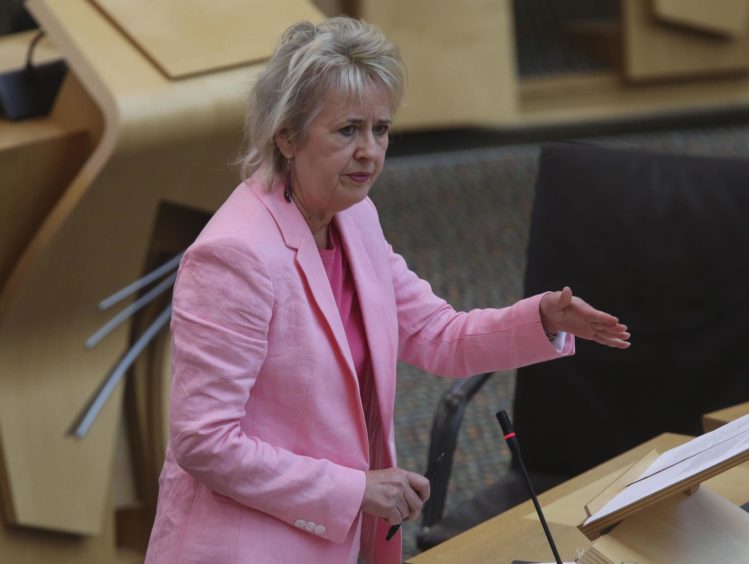With an ambitious environmental strategy, Scotch Whisky producers aim to have net-zero emissions within the next 20 years.
The Scotch Whisky industry has launched its new Sustainability Strategy which commits the sector to reaching net-zero emissions in its operations by 2040.
The strategy also aims to reduce dramatically the environmental impact of Scotland’s national drink in other areas.
The industry’s revised Sustainability Strategy builds on progress made over the last decade which has seen distillers work to reduce greenhouse gas emissions by more than a third.
It covers four main themes – tackling climate change, using water responsibly, moving to a circular economy, caring for the land – and commits the industry to work collaboratively with supply chain partners and government towards a collective goal of a sustainable dram from grain to glass.
Climate change
Launching the strategy, the Scotch Whisky Association (SWA) have also set their sights on this year’s COP26 conference in Glasgow where the industry plans to showcase its environmental work in the fight against climate change.
Commitments in the strategy include:
• To reach Net Zero emissions in its own operations by 2040, five years ahead of the Scottish Government’s 2045 Net Zero target and 10 years ahead of the UK Government’s target.
• By 2025, all new product packaging will be reusable, recyclable and compostable.
• A commitment to play an active role in the wider conservation and restoration of Scotland’s peatland to deliver environmental benefits for the common good by 2035, to be delivered through a Peat Action Plan.
• Continue to use water efficiently – so that all producers are within a responsible water use range by 2025.
The Scotch Whisky industry’s first Environment Strategy was launched in 2009, the first of its kind to cover an entire sector.
And since then, the industry has made significant progress against its original targets, including:
• 34% reduction in greenhouse gas emissions.
• 28% of primary energy use is now from non-fossil fuel sources, up from 3% in 2008.
• Efficiency of water use in Scotch Whisky production has improved by 22%.
• Just 1% of waste is now being sent to landfill, down 75% since 2016.
Environmental goals
The new strategy is a reflection that, despite all the work to date, the Scotch Whisky industry must do more if it is to achieve net-zero and its other environmental goals.
Karen Betts, chief executive of the SWA, said: “We are now committing to achieving net-zero in our operations by 2040, five years ahead of the Scottish Government’s target and 10 years ahead of the UK Government’s.
“We are also overhauling our water use and land use to ensure their sustainability, and where possible deliver an environmental net gain. And we are committing that all new packaging will be reusable, recyclable or compostable by 2025.
“All of this is close to distillers’ hearts because we know we must protect the natural environment. We depend on natural resources – water, cereals, yeast – to make Scotch Whisky. Scotch has been produced for 500 years and we want to ensure that it is being produced for generations to come.
“We are also proud that COP26 will be hosted in Glasgow later this year. The eyes of the world will be on Scotland, and on ours and others’ efforts to reverse the damaging impacts of climate change. We are looking forward to showcasing our industry’s contribution to global efforts to ensure our generation can arrest climate change and secure the future of our planet.”
Commitment
Terry A’Hearn, CEO of the Scottish Environment Protection Agency (Sepa) said: “Amid a climate crisis when industries need to act to protect the natural environment, this new Sustainability Strategy demonstrates the commitment of the Scotch Whisky industry to maintain its position as an environmental leader, containing ambitious targets that will help to ensure a green future for Scotch Whisky producers large and small.”
The Scottish Government’s Environment and Climate Change Secretary, Roseanna Cunningham, added: “I welcome the SWA’s new Sustainability Strategy, which aims to pave the way for the sector to reach net-zero by 2040, positioning efforts alongside our national ambition to end Scotland’s contribution to climate change.
“Given the huge burden that the pandemic continues to place on all our activities, it is imperative that we deepen collaboration between government, industry and wider society to deliver our green recovery and I am confident that this strategy will support the association’s members to continue to aim high, to plan for the long-term and help become a net-zero nation.”
Secretary of State for Scotland Alister Jack said: “The Scotch Whisky Association is leading the way with the launch of their Sustainability Strategy. This initiative will work towards a sustainable future for Scotch Whisky and tackling climate change – the biggest challenge of our time.
“Later this year in Glasgow we will host COP26, a global gathering to consider the issues around climate change and our collective response to it. The spirits industry is a key Scottish sector and this Strategy is an excellent example of industry playing a part in the green industrial revolution.
“I am pleased to welcome this on the back of the recent launch of the UK Government’s Green Distilleries Fund which will support 11 distilleries across Scotland and a further six in England to deliver the sort of sustainable practices that this Strategy promotes.”
Energy Minister Anne-Marie Trevelyan said: “We are already helping Scotch Whisky take a lead on low-carbon production with £10 million investment and it’s fantastic that this new strategy is taking that even further by helping one of our most cherished industries also become one of our greenest.”


